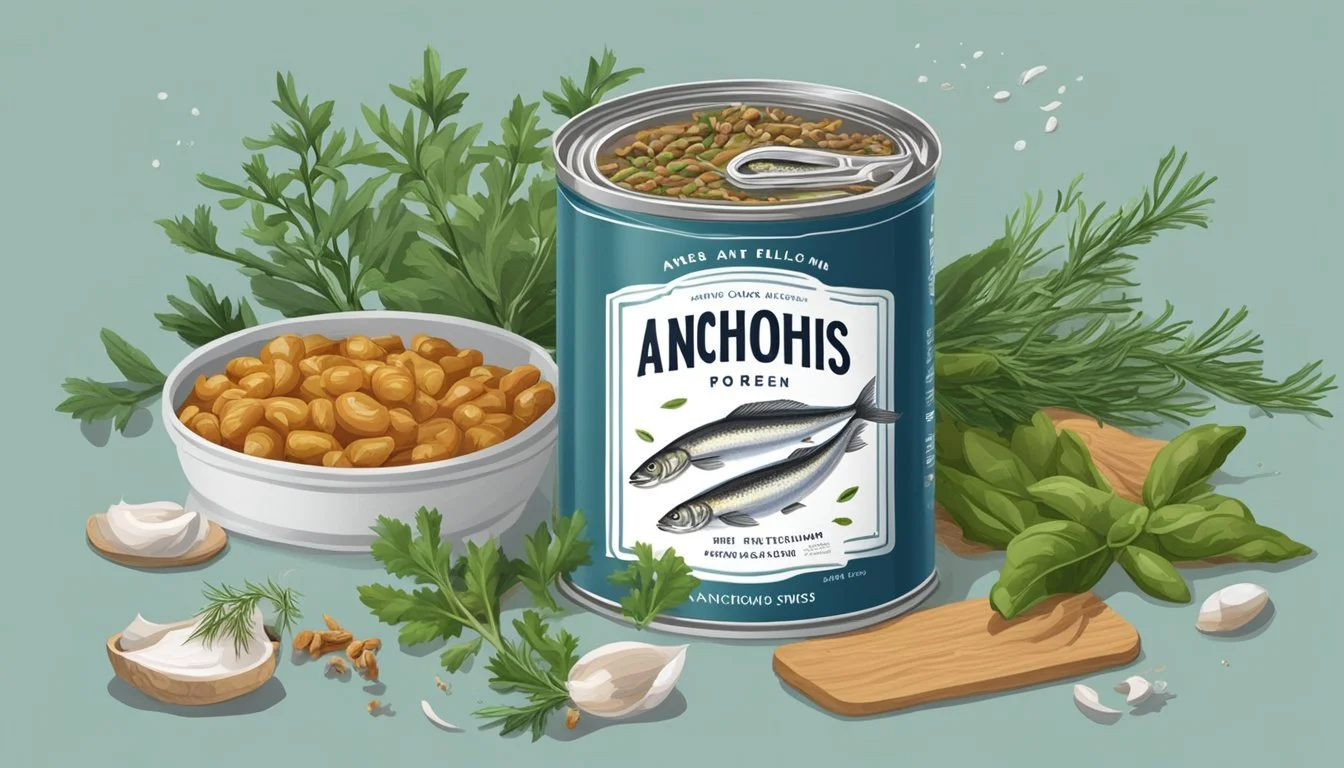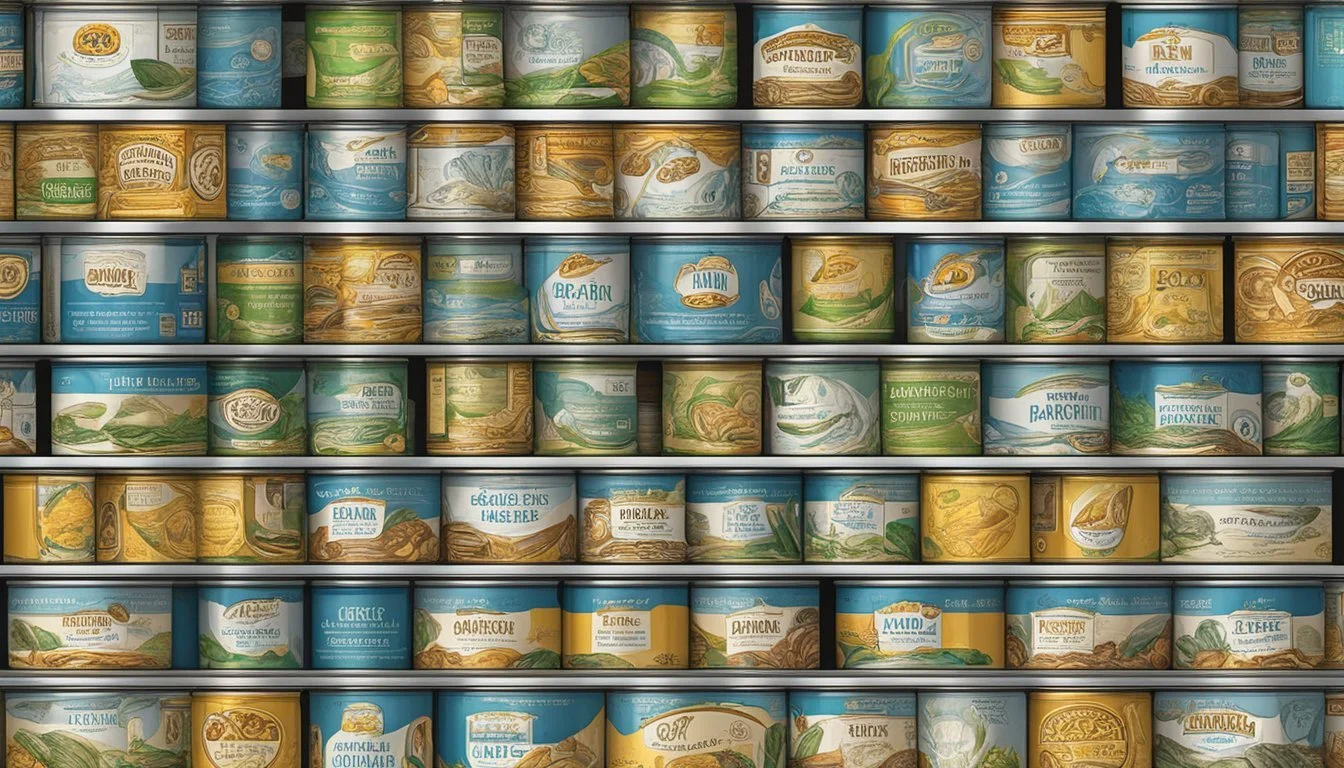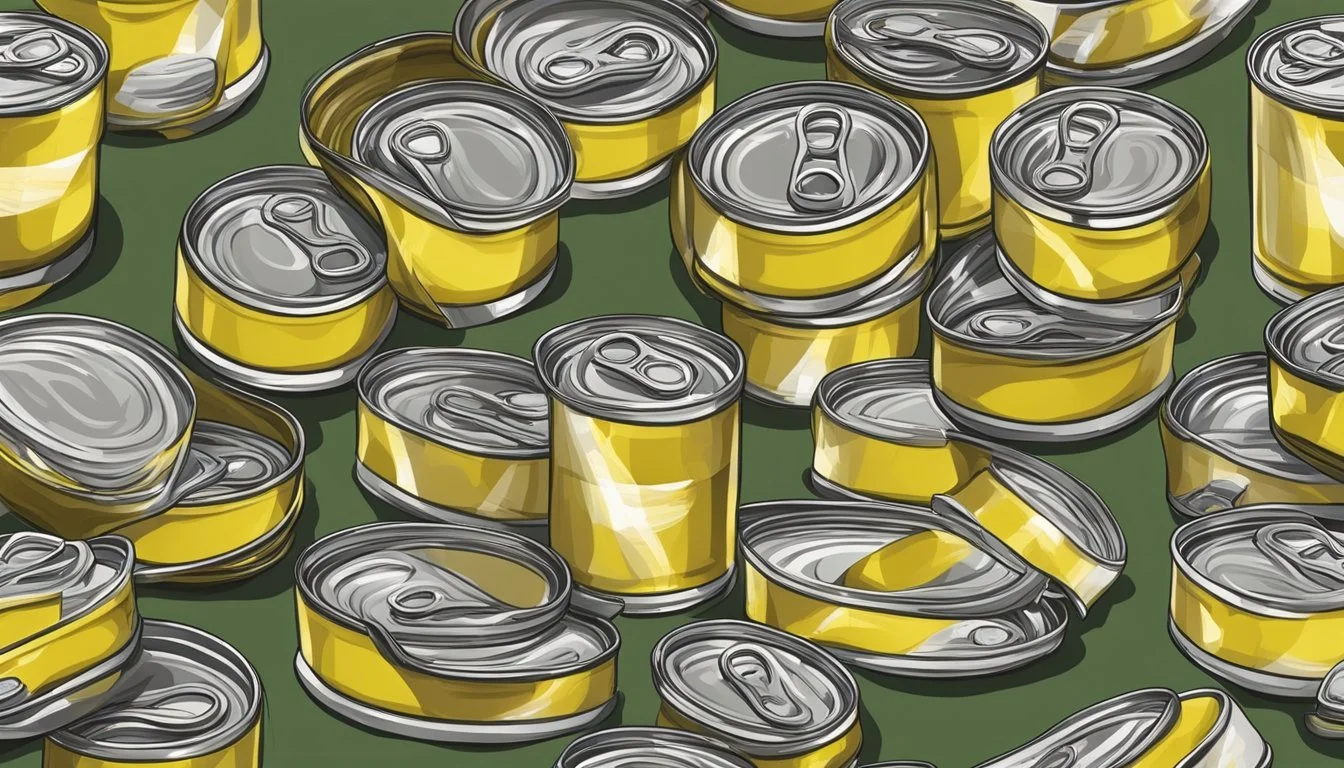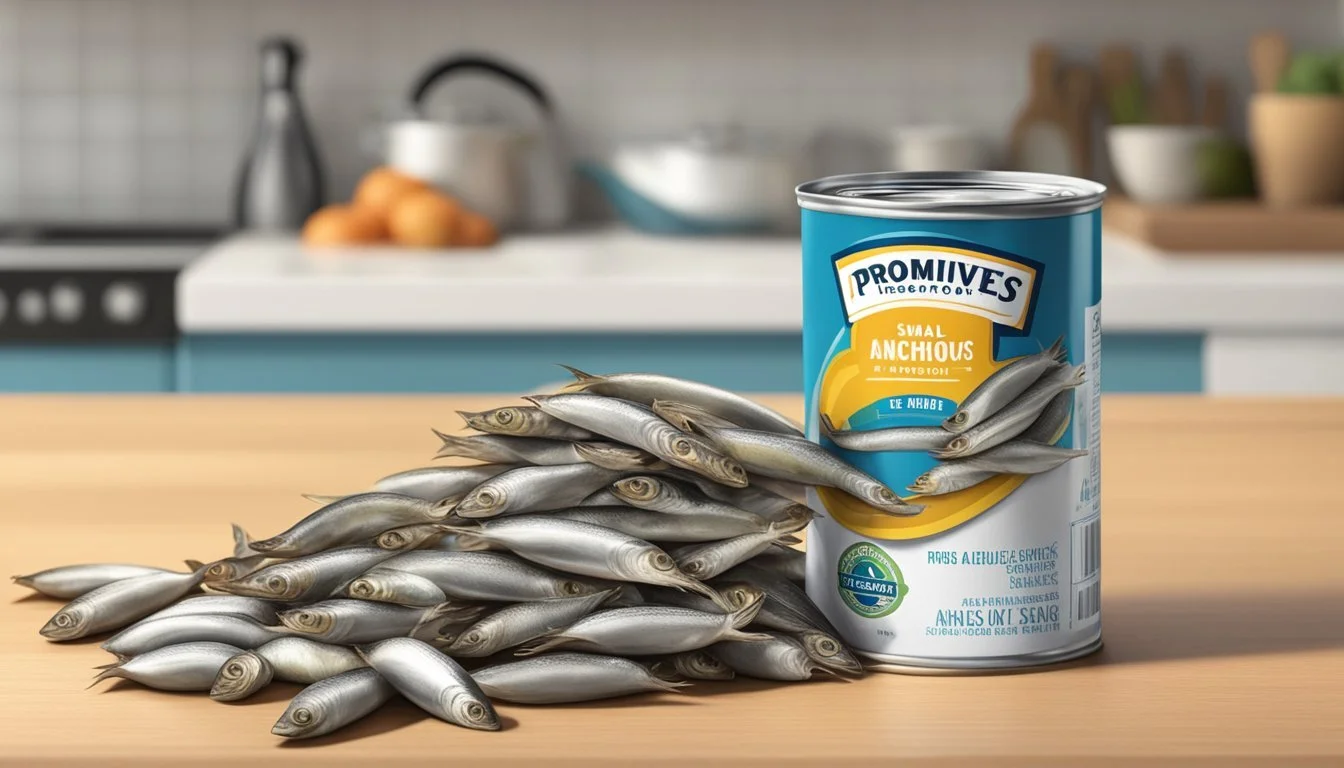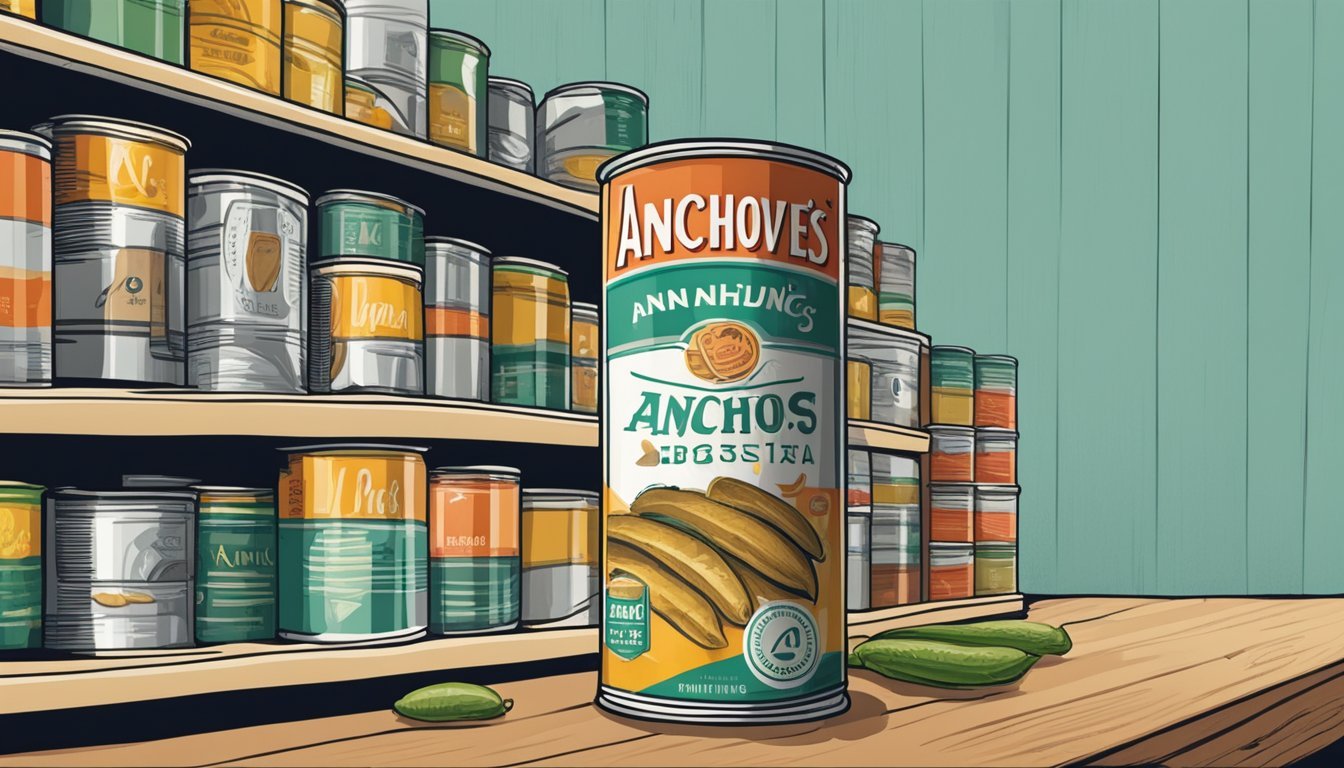Do Canned Anchovies Go Bad?
Shelf Life and Storage Tips
Canned anchovies are a pantry staple for many culinary enthusiasts. These tiny, flavorful fish are often used to add a punch of umami to various dishes. While their robust taste can enhance any meal, one common question arises: do canned anchovies go bad?
In terms of preservation, canned anchovies are known for their impressive shelf life. When stored correctly in a cool, dry area like a pantry, unopened cans or jars can last for 3 to 5 years without losing their quality. The key to maintaining the flavor and quality of canned anchovies is proper storage, which ensures they remain a reliable ingredient in your kitchen.
Even though canned anchovies have a long shelf life, it's crucial to watch for signs of spoilage. A foul odor, discoloration, or a slimy texture are clear indicators that the anchovies are no longer safe to consume. By understanding these signs, you can avoid potential food safety risks and enjoy the distinct flavor anchovies bring to your dishes.
Understanding Canned Anchovies
Canned anchovies are a popular staple in many kitchens due to their long shelf life and ability to enhance the flavor of dishes. Various factors influence the freshness and nutritional value of these salty, oily fish.
Packaging Types and Their Impact on Freshness
Canned anchovies come in different packaging options, each affecting freshness. Common containers include metal cans and glass jars. These containers are usually sealed and packed in oil and salt, which are crucial for preservation.
Cans provide a strong barrier against light and air, extending shelf life significantly. When stored in a cool, dry place, unopened cans can keep their quality for up to 3-5 years. Glass jars are similar, but they should be kept away from light to avoid quality deterioration. Once opened, store anchovies in an airtight container to maintain freshness for about 2 months in the refrigerator.
Nutritional Value and Health Benefits
Anchovies are nutritious, rich in essential nutrients like omega-3 fatty acids, protein, and various vitamins and minerals. They are an excellent source of calcium, iron, and vitamin B12. These nutrients are preserved well due to the oil and salt in the packaging.
Omega-3 fatty acids support cardiovascular health and reduce inflammation, while protein aids in muscle repair and growth. Despite their high salt content, moderate consumption can be beneficial. Anchovies are also low in calories, making them a healthy addition to various diets. Proper storage reduces the risk of foodborne illnesses, ensuring they remain safe to eat.
Proper Storage Conditions
Proper storage is essential to maximize the shelf life and maintain the freshness of canned anchovies, whether they are unopened or already opened.
Storing Unopened Cans
Unopened cans or jars of anchovies should be kept in a cool, dry place. A pantry or cupboard away from heat sources like stoves or direct sunlight is ideal. This ensures that the temperature remains stable between 50°F to 70°F (10°C to 21°C). Under these conditions, unopened canned or jarred anchovies can last for 3 to 5 years.
Keep in mind that while the product remains safe to eat beyond this period, its quality might degrade. Inspect the cans for any signs of damage, rust, or bulging, which may indicate spoilage. Properly stored, these anchovies will generally stay at their best quality, contributing to a well-managed pantry.
Storing Opened Anchovies
Once opened, canned or jarred anchovies should be transferred to an airtight container and covered in oil. This helps maintain their freshness and prevent them from drying out. Store the container in the refrigerator, where the low temperature will slow down spoilage.
Important Tips:
Ensure that the anchovies are fully submerged in oil to extend their shelf life.
Use a clean spoon or utensil to remove anchovies from the container to avoid contamination.
Refrigerated, opened anchovies can last up to 2 months. Always inspect the product for off smells or discoloration before use. This careful storage will help maintain their flavor and quality for a longer period.
Maximizing Shelf Life
Proper storage extends the shelf life of canned anchovies. Unopened cans or jars should be stored in a cool, dry place. Ideally, they remain best quality for 3 to 5 years.
Pay attention to labels such as "best by," "best before," or "expiration date." These indicate the period during which the anchovies will maintain peak quality. It is generally safe to consume beyond these dates if stored properly, but the quality may decline.
Opened Anchovies
Once opened, anchovies need careful handling:
Transfer: Move them to a glass or plastic container if originally in a tin can.
Submerge: Ensure anchovies stay submerged in oil or salt to prolong freshness.
Refrigerate: Store in the refrigerator. They can last 1 to 2 months this way.
Tips on Storage
Always store anchovies in a manner that prevents exposure to air, which can lead to spoilage. Use airtight containers for opened anchovies to maintain their best quality. Regularly check the containers for any signs of spoilage, such as a strong fishy smell or mushy texture.
Following these well-known practices ensures that you can enjoy your anchovies for an extended period while maintaining their best quality.
Identifying Spoilage
Detecting spoilage in canned anchovies is crucial for ensuring safety and quality. There are several indicators to look out for when determining if anchovies have gone bad.
Odor: Fresh anchovies have a mild, briny smell. An overpowering or rotten smell indicates spoilage.
Color: Spoiled anchovies often show discoloration. The flesh may turn dark brown or black.
Texture: Fresh anchovies are firm to the touch. A mushy or slimy texture suggests they have spoiled.
White Residue: A chalky, white residue on the fish may be a sign of spoilage.
These signs are useful for ensuring anchovies are safe to eat.
Safe Consumption Guidelines
Canned anchovies can last a long time if stored correctly, but there are important guidelines to follow to ensure they remain safe to eat.
To maximize shelf life and prevent foodborne illness, store unopened cans or jars in a cool, dry place at room temperature (50°F to 70°F or 10°C to 21°C). Avoid areas near stoves or heat-generating appliances.
Safety Date: Pay attention to the expiration or "best by" date on the packaging. Consuming anchovies past this date can increase the risk of health issues.
Once opened, anchovies should be transferred to the refrigerator and stored in an airtight container. Opened anchovies can typically last up to 2 months if properly refrigerated.
Watch out for signs of spoilage, such as a rancid smell, changes in texture, or an overly fishy odor. If any of these signs are present, it's best to discard the anchovies to avoid food poisoning.
By following these guidelines, the risk of consuming spoiled anchovies and the associated health risks can be minimized. Anchovies can be enjoyed safely when these storage tips are adhered to.
Usage in Cooking and Recipes
Canned anchovies are a versatile ingredient and can elevate a variety of dishes with their distinct umami flavor. They are often used in Caesar salad dressing, where their salty, savory taste brings depth to the dish.
In pasta sauces, anchovies dissolve easily when cooked, providing a rich, flavorful base. A simple pasta dish can be enhanced with garlic cloves, lemon juice, and a touch of grated parmesan, creating a complex yet balanced taste.
Pizzas also benefit from the briny punch of anchovies. Spread them evenly over the toppings right before the pizza goes into the oven for a unique twist on traditional flavors.
Anchovies are a common addition to seafood dishes too, particularly in Mediterranean cooking. They can be added to stews or used in sauces to complement other seafood flavors.
Here is a quick recipe idea:
Spaghetti with Anchovies and Garlic
Ingredients:
Spaghetti
Olive oil
Garlic cloves
Canned anchovies
Red chili flakes
Lemon juice
Grated parmesan
Instructions:
Cook spaghetti as per package instructions.
In a pan, heat olive oil and add minced garlic cloves.
Add anchovies and cook until they dissolve.
Mix in red chili flakes.
Combine the cooked spaghetti with the anchovy mixture.
Finish with lemon juice and grated parmesan.
With just a few simple ingredients, anchovies can transform everyday meals into gourmet experiences. Their ability to blend and enhance other flavors makes them a staple in many kitchens. Whether used sparingly or as the star, anchovies are essential for adding depth and complexity to a wide range of recipes.
Preservation Techniques Beyond Refrigeration
Anchovies can be preserved using methods other than refrigeration, ensuring they remain safe and flavorful for extended periods.
Freezing
Freezing is an effective way to prolong the shelf life of anchovies. To freeze anchovies, clean and gut them first. Place them in airtight containers or vacuum-sealed bags to reduce exposure to air and moisture. Ideally, store these containers in the coldest part of the freezer.
Oil Preservation
Another technique involves submerging anchovies in oil. Use an airtight container to minimize exposure to air, which helps keep the fish fresh and tasty for up to two months.
Dry Salting
Dry salting is a traditional method that involves packing anchovies in coarse salt. This technique not only enhances their flavor but also extends their shelf life significantly. The packed anchovies should be stored in a cool, dry place.
Vinegar or Brine
Preserving anchovies in vinegar or brine can also be effective. This method involves soaking the fish in a vinegar-based solution or saltwater brine. Store the anchovies in airtight containers to maintain their quality.
Each of these methods provides various options for preserving anchovies without relying on refrigeration, ensuring they remain a versatile ingredient in the kitchen.
Troubleshooting Common Issues
Spoilage Indicators:
To spot bad anchovies, look for a foul odor. Fresh anchovies have a mild sea smell. A rotten or overpowering smell suggests spoilage. Another sign is discoloration. If the anchovy flesh turns dark brown or black, it is no longer safe to eat.
Preventing Mushiness:
Anchovies can become mushy if exposed to high heat. Store them in a cool, dry area away from heat-generating appliances. Keeping them at room temperature between 50°F to 70°F (10°C to 21°C) helps maintain texture.
Metallic Taste:
A metallic taste can develop if anchovies are not stored correctly. This often occurs when they come into prolonged contact with metal cans. Transfer opened anchovies to an airtight container, preferably in oil, and refrigerate.
Proper Storage:
To keep anchovies fresh, store unopened cans at room temperature away from heat. Once opened, refrigerate them in an airtight container submerged in oil. They can last up to 2 months this way. Avoid exposure to air as it can speed up spoilage.
Odor Management:
Opened anchovies can emit a strong smell. To manage this, keep them in an airtight container. Using a glass container with a tight seal can help reduce odors compared to plastic.
Table of Storage Methods:
Storage Condition Duration Unopened, Room Temperature 3-5 years Opened, Refrigerated in Oil Up to 2 months
Following these tips ensures the best quality and taste for canned anchovies.
Substitutes and Alternatives
When canned anchovies are not available or if you prefer a different flavor, several substitutes can be used effectively.
Soy Sauce:
Soy sauce offers a rich, umami flavor that can mimic the depth of anchovies. It’s particularly useful in dressings, sauces, and marinades.
Capers provide a briny and salty taste similar to anchovies. They are ideal for garnishes, pasta sauces, and salad dressings.
Worcestershire Sauce:
This sauce contains anchovies as one of its ingredients and can be a good alternative. It imparts a complex, savory flavor, making it perfect for meats, stews, and sauces.
Anchovy Paste:
Anchovy paste is a convenient option that has a slightly milder taste. It's great for spreading on toast, stirring into sauces, or adding to salad dressings.
Shrimp Paste:
Shrimp paste also brings a umami punch and can be used in small quantities. It's suitable for Asian dishes, curries, and soups.
These alternatives ensure that you can maintain a flavorful profile in your recipes without the need for canned anchovies. Each substitute has its unique flavor nuances, so choose based on the specific taste and texture you desire in your dish.
Additional Tips for Best Use
Store Properly: To maximize the longevity of commercially packaged anchovy fillets, ensure they are stored in a cool, dry place before opening. Once opened, transfer the anchovies to a glass or plastic container and keep them submerged in oil or salt in the refrigerator.
Check for Freshness: Fresh anchovies should be firm to the touch and have a mild scent. If the flesh has any discoloration, such as turning brown or black, it's best to discard them.
Use in Cuisine: Anchovies can enhance a variety of dishes. They add a salty, savory flavor to salads, pasta sauces, and pizzas. Their bold taste makes them a versatile ingredient in many cuisines.
Avoid Waste: If you have leftovers from an opened can, use them within 1-2 months. Adding anchovies to different recipes can help ensure they don't go to waste.
Storage Containers: Always store opened anchovies in airtight containers to prevent them from becoming mushy or absorbing other fridge odors. Keeping them submerged in oil can further extend their freshness and maintain their savor.
Mold Inspection: Regularly inspect stored anchovies for any signs of mold. If mold appears, discard them immediately to prevent any health risks.
These tips can help ensure you get the best flavor and use out of your canned anchovies while maintaining food safety.


